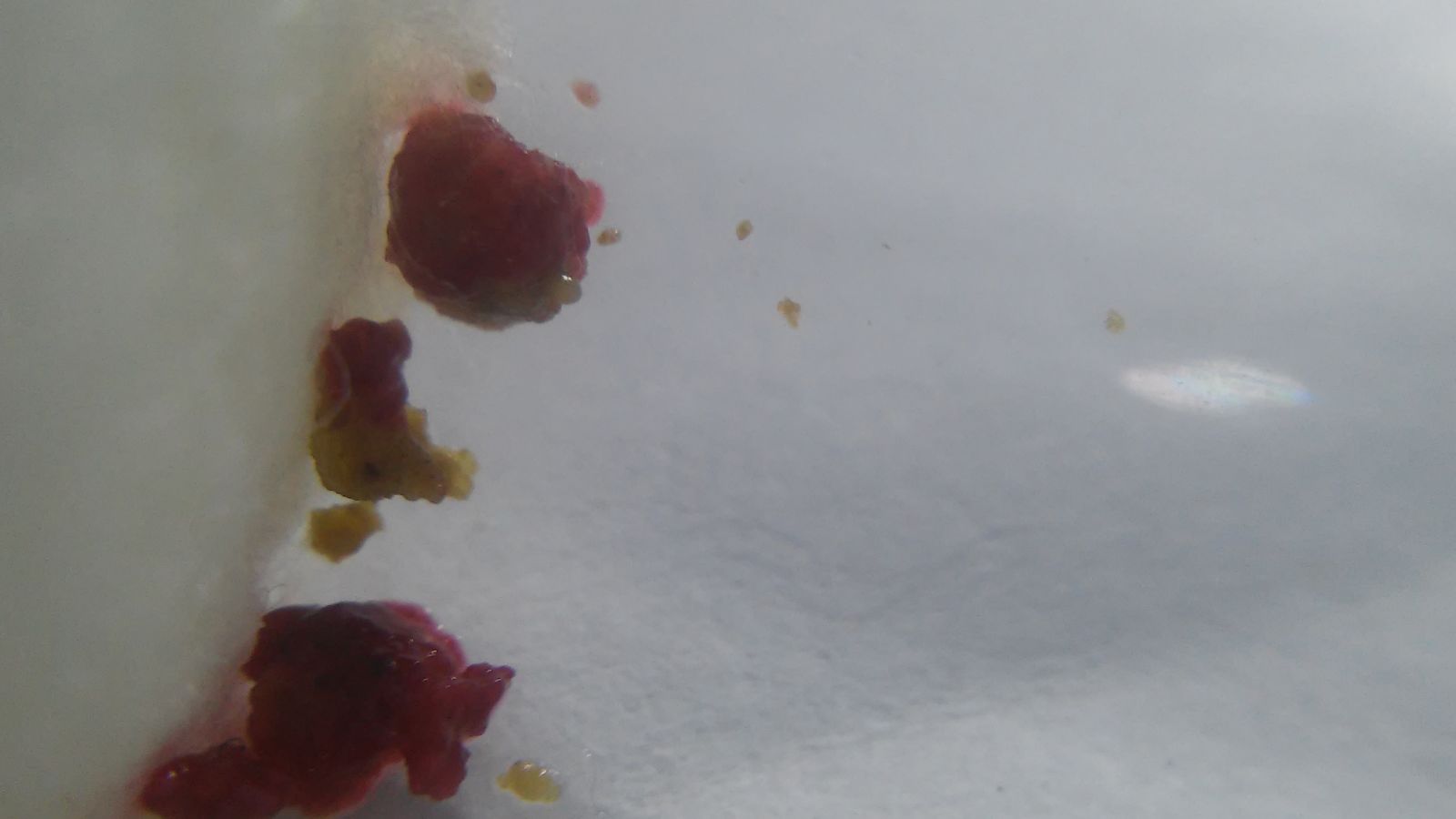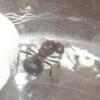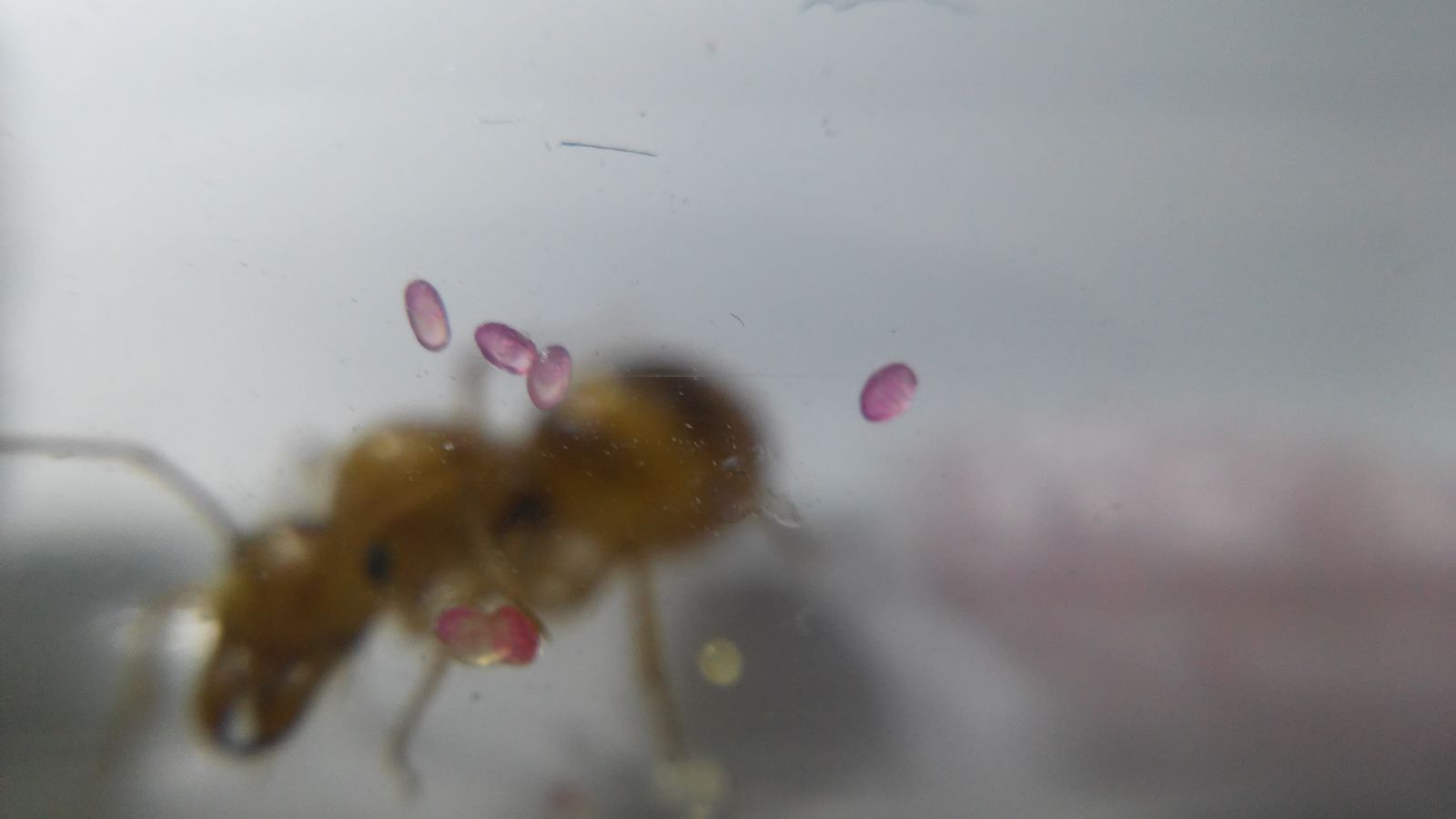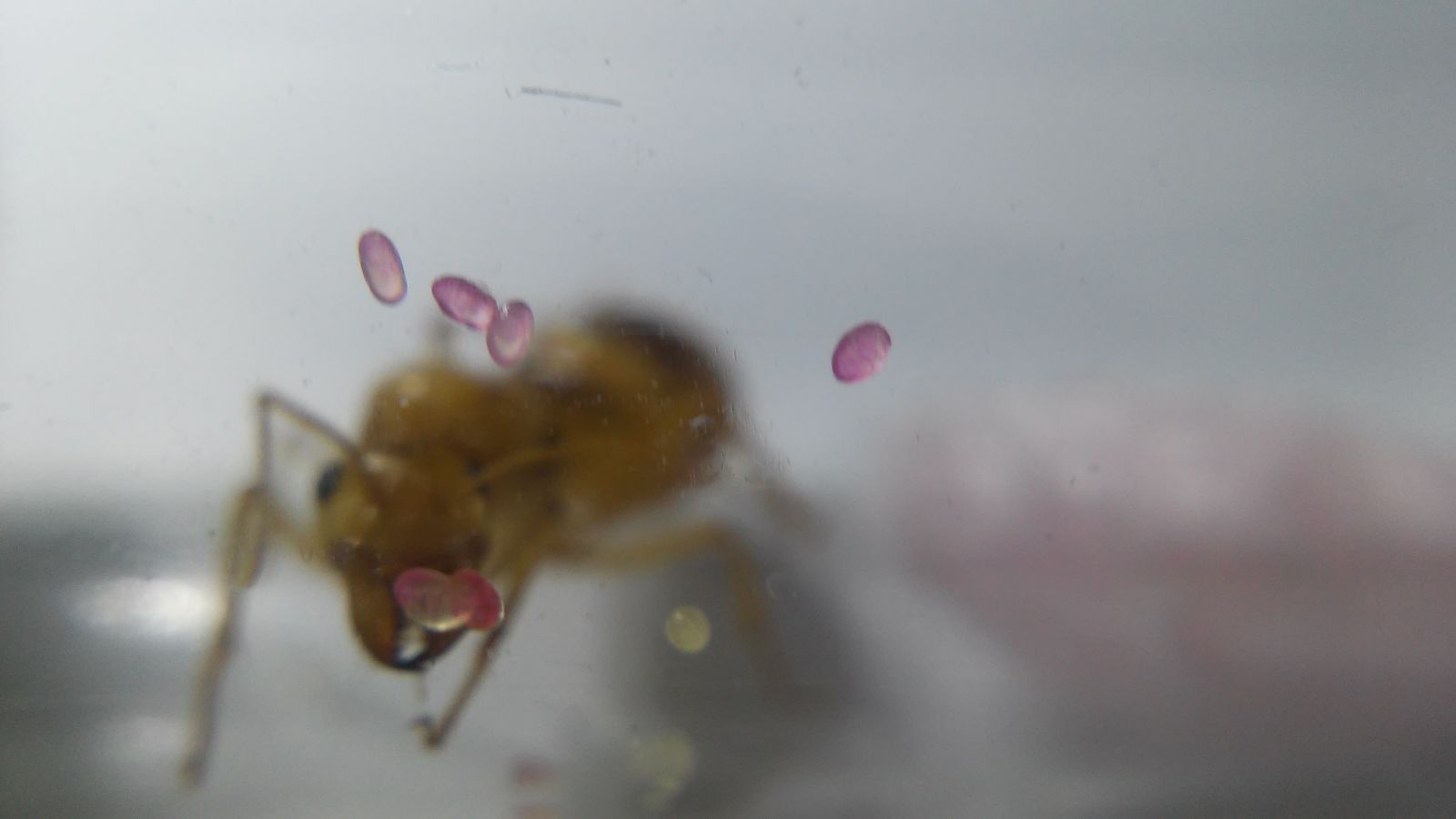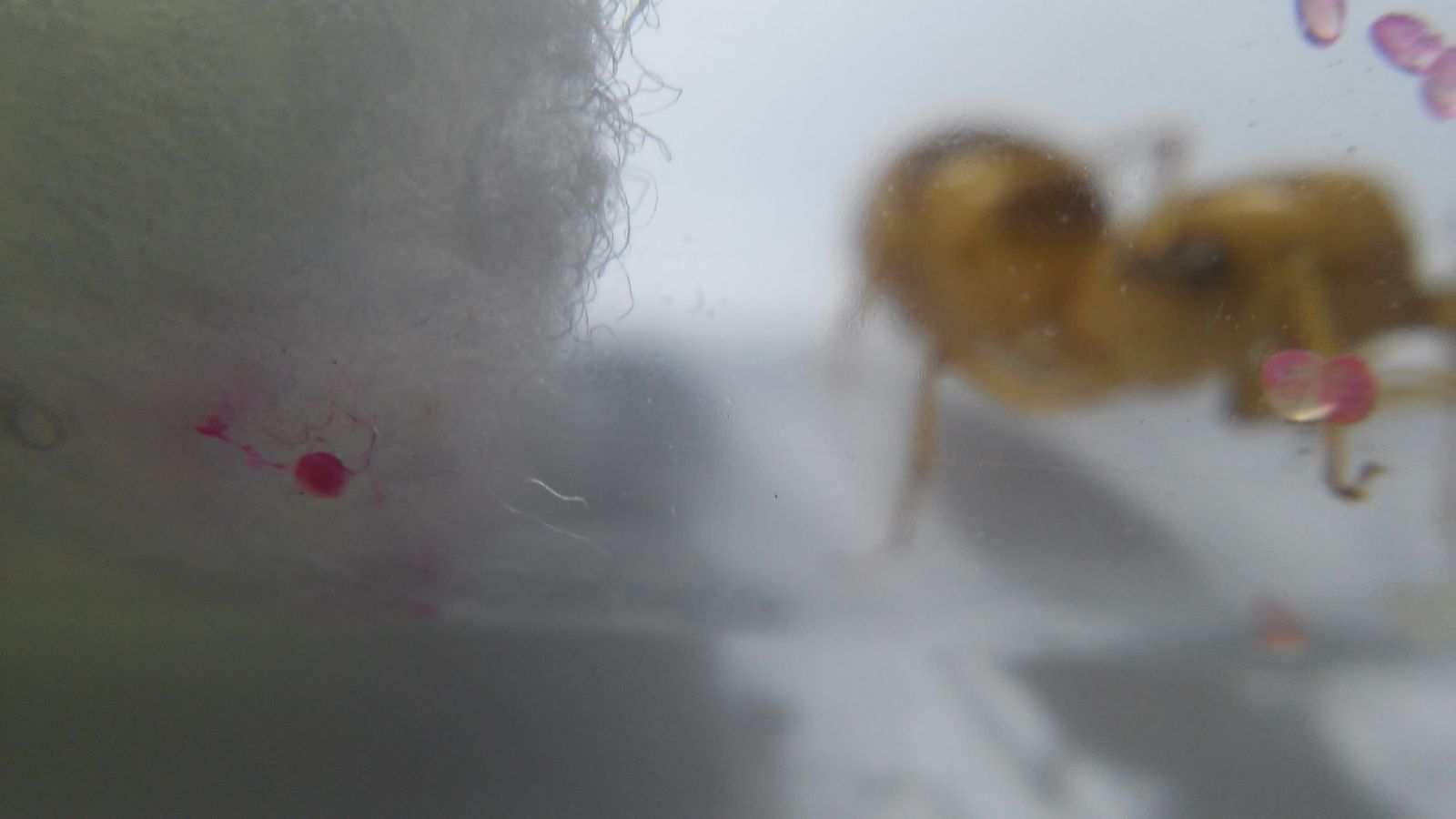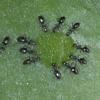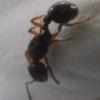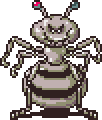I've heard mentions of a red or pink bacteria that develops in test tubes or on decaying foods.
Recently, I placed some food in a foraging area that is kept damp to support a limited microbiome of springtails and detritivorous mites.
The food was physically unchanged for several days, and either the ants or springtails chewed off a piece that was separated from the bulk of it. After a few days, very large, translucent-colored mites appeared on the food. Shortly after this, a red film began covering the food, and quickly covered it entirely.
Perhaps unsurprisingly, the mites and springtails stopped feeding from the food once it was consumed with the red organisms. Apparently, the mites and springtails continue to eat the food, primarily from the underside, which appears less contaminated than the top. Perhaps the organism is highly aerobic, which would rule out fungus?
I propose that it may be possible that mites, and even possibly ants and other higher organisms, are opportunistic carriers of this unidentified, red microorganism, which doesn't appear to harm the host, but is expelled/regurgitated onto foods the host is eating through saliva or other mouthparts. The host may only be harmed if it is within close and confined contact to the contaminated food or water source, such as a test tube. The organism appears to require or prefer a damp and humid environment to reproduce most quickly.
If anyone has any additional observations regarding red or pink bacteria, please post them herein this thread.
I'm in the process of uploading a video that shows the various organisms living on this one piece of food.
Edited by drtrmiller, February 28 2015 - 7:18 PM.









